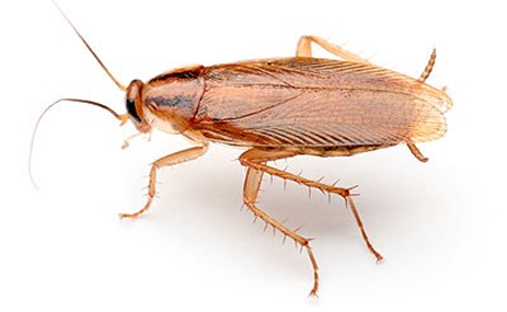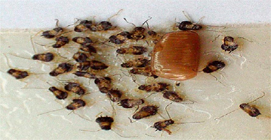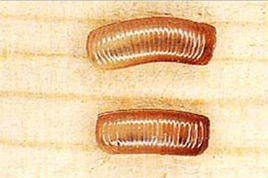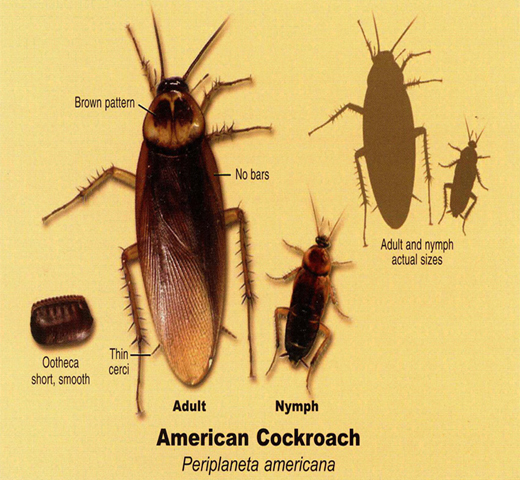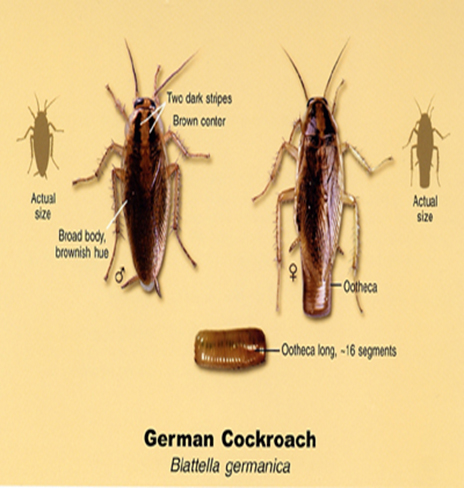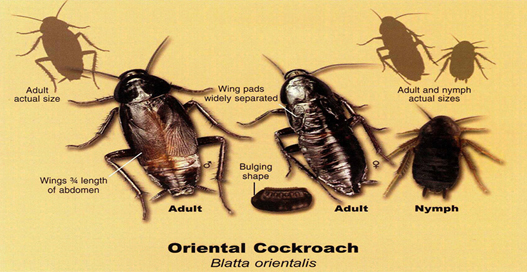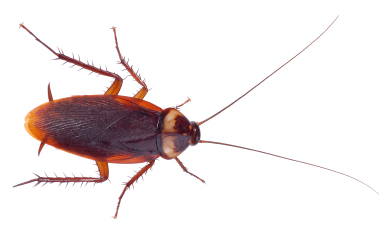


American Cockroaches
BIOLOGY
Females produce many egg capsules, having 14-16 eggs hatching in 50-55 days into grayish-brown "nymphs". Female American Roaches prefer to deposit their eggs in protected and damp areas. Nymphs will molt 9 to 13 times before reaching maturity. The nymphs are 1/4-inch long. The nymphs are gray-brown when they come out of the egg capsule.
HABITAT
Adults and nymphs can be found in a variety of places. In the North, they are commonly found in steam heat tunnels or in large institutional buildings. They are commonly found around accesses to sewers, near garbage, and near sump pumps. Nymphs may be found in dark basements, crawl spaces, floor drains. In basements, they may be found in corners areas high on the walls or in floor drains.
German Cockroach
Biological Facts
- The German roach is the most common species in commercial kitchens
- The German roach originated in Southeast Asia, so look for them in "tropical" locations, i.e., warm & moist.
- German roaches reproduce rapidly. Missing one pregnant female is all you need for the problem to rebound.
- German cockroaches have a become resistant to many pesticides.
- Fast-killing pesticides and flushing agents will cause them to scatter and will make them harder control.
- German roaches carry their egg cases until they hatch, so loose egg cases are usually empty.
- German roaches generally travel short distance to feed. In other words, they dwell near where they feed.
- German roaches are usually transported accidentally from one place to another as adults because adults are most resistant to desiccation.
- Roaches have a strong need to be touched on all sides at once so they like to hide narrow cracks and crevices.
- Roaches are rarely dispersed throughout a building. They choose a spot based on temperature first, then availability of water and thirdly, availability of food.
- Roaches are generally active mainly at night and remain hidden during the day, but they will learn to avoid site specific human activity cycles.
- A roach sheds its skin (molts) a number of times during its life. When molting, the roach remains in its harborage and doesn’t feed until its new skin has hardened. During this period the roaches may be less attracted to the baits.
